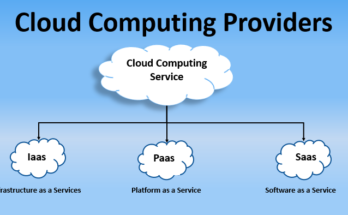The internet has become an integral part of our daily lives, with millions of people relying on it for information, communication, and even essential services. However, despite the vast resources available online, many people with disabilities or impairments face significant challenges in accessing web content. This is where web accessibility comes in, as it ensures that web content is designed and developed to be easily accessed and used by everyone, including those with disabilities. In this article, we will discuss the importance of web accessibility and its impact on inclusivity, equality, and user experience.
What is Web Accessibility?
Web accessibility refers to the design and development of websites, applications, and other digital content to ensure that people with disabilities or impairments can access, navigate and interact with them. This means that websites and applications should be designed in a way that makes them usable by people with a wide range of disabilities, including visual, auditory, physical, cognitive, and neurological impairments.
- According to a report by the Royal National Institute of Blind People (RNIB), 75% of people with disabilities experience barriers when browsing the web.
- In 2020, the number of web accessibility lawsuits in the United States increased by 23%, with a total of 3,550 lawsuits filed in federal courts.
Why is Web Accessibility Important?
Web accessibility is essential because it ensures that people with disabilities have equal access to information, communication, and services provided online. Without web accessibility, people with disabilities may face significant barriers that prevent them from accessing critical resources and services that others take for granted. By making web content accessible, organizations can create an inclusive and diverse environment that provides equal opportunities for all.
Web Accessibility and Inclusivity
Inclusivity is an essential aspect of a modern and progressive society, and web accessibility plays a critical role in promoting inclusivity. When websites and applications are designed with accessibility in mind, they provide an opportunity for people with disabilities to participate fully in online activities, social media, e-commerce, and other essential services. This ensures that everyone has an equal chance to engage and interact with the world, regardless of their physical or cognitive abilities.
Web Accessibility and User Experience
Web accessibility is not only important for people with disabilities but also for the general user experience. When websites and applications are designed with accessibility in mind, they tend to be more user-friendly and easier to navigate. This is because accessibility requires developers to consider factors such as clear and concise language, well-structured content, and intuitive navigation. By focusing on accessibility, developers can create websites and applications that are more user-friendly, efficient, and intuitive, resulting in a better user experience for everyone.
The importance of web accessibility goes beyond the ethical considerations of providing equal access and opportunities to people with disabilities. It also has legal implications in many countries, with various regulations requiring websites and applications to be accessible to people with disabilities.
Failing to comply with these regulations could result in legal action and penalties, which could be costly for organizations. In addition, web accessibility can also be a competitive advantage for organizations, as it enables them to reach a wider audience and tap into the purchasing power of people with disabilities, which is estimated to be over $8 trillion globally.
Furthermore, web accessibility can also benefit people without disabilities, such as older adults, people with slow internet connections, and those using an older technology. By designing websites and applications that are accessible and user-friendly, organizations can provide a better experience for all users, increasing user engagement, loyalty, and satisfaction.
4 principles of web accessibility
The four principles of web accessibility are a set of guidelines developed by the Web Content Accessibility Guidelines (WCAG) to help ensure that web content is accessible to people with disabilities. The WCAG is the most widely used standard for web accessibility and is recognized by many countries and organizations worldwide. The four principles of web accessibility are as follows:
Perceivable
This principle refers to making web content perceivable to all users, including those with visual, auditory, or other sensory impairments. This can be achieved by providing alternative text for images, captions for videos, and audio descriptions for multimedia content.
Operable
This principle refers to making web content operable by all users, including those with physical or motor impairments. This can be achieved by providing keyboard access for all functionalities, ensuring that the website can be navigated without a mouse, and providing clear and consistent navigation.
Understandable
This principle refers to making web content understandable by all users, including those with cognitive or learning disabilities. This can be achieved by using clear and simple language, providing consistent and predictable content and layout, and organizing information in a logical and meaningful way.
Robust
This principle refers to making web content robust by using the latest web technologies and ensuring that it can be interpreted by a wide range of assistive technologies. This can be achieved by using valid HTML, CSS, and other web technologies, avoiding outdated or proprietary technologies, and testing the website with a range of assistive technologies.
Moreover, by following these four principles, developers can ensure that web content is accessible to a wide range of users, including those with disabilities, and improve the user experience for all. It’s important to note that web accessibility is an ongoing process, and websites should be regularly reviewed and updated to ensure that they remain accessible to all users.
Wrapping Up
In summary, the importance of web accessibility cannot be overstated, as it is crucial for creating an inclusive and diverse society, ensuring equal access and opportunities for people with disabilities, complying with legal requirements, and improving the user experience for everyone. Organizations that prioritize web accessibility can reap various benefits, including enhanced user engagement, better customer satisfaction, and a more extensive reach.
It is an essential aspect of a modern and inclusive society, and it plays a critical role in ensuring equal access and opportunities for people with disabilities. By designing websites and applications with accessibility in mind, organizations can create a more inclusive and diverse environment that provides equal opportunities for all.
In addition, accessibility also contributes to a better user experience, making web content more user-friendly, efficient, and intuitive. As such, web accessibility should be a priority for all organizations that aim to provide an inclusive and accessible online presence.




